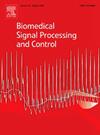EchoSAM: SAM adaption for unified 2D echocardiography segmentation and ejection fraction calculation
IF 4.9
2区 医学
Q1 ENGINEERING, BIOMEDICAL
引用次数: 0
Abstract
Automatic segmentation of echocardiography and the calculation of clinical data play a crucial role in the assessment of cardiac function. The left ventricular ejection fraction (LVEF) is a key indicator of the heart’s systolic performance. In this study, we present EchoSAM, a unified framework designed for integrated structures segmentation and LVEF calculation based on the Segment Anything Model (SAM). SAM exhibits strong and precise zero-shot segmentation skills in natural images. Nevertheless, because of the domain difference, it cannot be applied to echocardiography. In order to mitigate the effects of blurred boundaries, low contrast, and high noise, we enhance the Image Encoder to acquire more informative features. Meanwhile, according to the LVEF calculation of Simpson method, we design a points localization module, leveraging the combination of image features and Mask Decoder output to obtain precise points locations. Our EchoSAM model not only enables an accurate LVEF calculation in a fully automatic way, but also allows checking the segmentation quality of cardiac structures to ensure clear and reliable clinical analysis. We rigorously evaluated our approach on three datasets: CAMUS, EchoNet-Dynamic, and EchoDUT. The results demonstrate that EchoSAM has achieved Dice of 94.03% for the left ventricle (LV), 88.48% for the myocardium (MYO), superior to other state-of-the-art methods. Additionally, LVEF yielded a mean absolute error (MAE) of 6.39% and a root mean square error (RMSE) of 8.56%.
EchoSAM:用于统一二维超声心动图分割和射血分数计算的SAM适配
超声心动图的自动分割和临床数据的计算在心功能评估中起着至关重要的作用。左心室射血分数(LVEF)是心脏收缩性能的关键指标。在这项研究中,我们提出了EchoSAM,一个基于分段任意模型(SAM)的集成结构分割和LVEF计算的统一框架。SAM在自然图像中表现出强大而精确的零镜头分割能力。然而,由于域的差异,它不能应用于超声心动图。为了消除边界模糊、对比度低和噪声高的影响,我们对图像编码器进行了增强,以获得更多的信息特征。同时,根据Simpson方法的LVEF计算,我们设计了一个点定位模块,结合图像特征和Mask Decoder输出来获得精确的点位置。我们的EchoSAM模型不仅可以全自动准确地计算LVEF,还可以检查心脏结构的分割质量,以确保清晰可靠的临床分析。我们在三个数据集上严格评估了我们的方法:CAMUS、EchoNet-Dynamic和EchoDUT。结果表明,EchoSAM对左心室(LV)的准确率为94.03%,对心肌(MYO)的准确率为88.48%,优于其他先进的方法。此外,LVEF的平均绝对误差(MAE)为6.39%,均方根误差(RMSE)为8.56%。
本文章由计算机程序翻译,如有差异,请以英文原文为准。
求助全文
约1分钟内获得全文
求助全文
来源期刊

Biomedical Signal Processing and Control
工程技术-工程:生物医学
CiteScore
9.80
自引率
13.70%
发文量
822
审稿时长
4 months
期刊介绍:
Biomedical Signal Processing and Control aims to provide a cross-disciplinary international forum for the interchange of information on research in the measurement and analysis of signals and images in clinical medicine and the biological sciences. Emphasis is placed on contributions dealing with the practical, applications-led research on the use of methods and devices in clinical diagnosis, patient monitoring and management.
Biomedical Signal Processing and Control reflects the main areas in which these methods are being used and developed at the interface of both engineering and clinical science. The scope of the journal is defined to include relevant review papers, technical notes, short communications and letters. Tutorial papers and special issues will also be published.
 求助内容:
求助内容: 应助结果提醒方式:
应助结果提醒方式:


